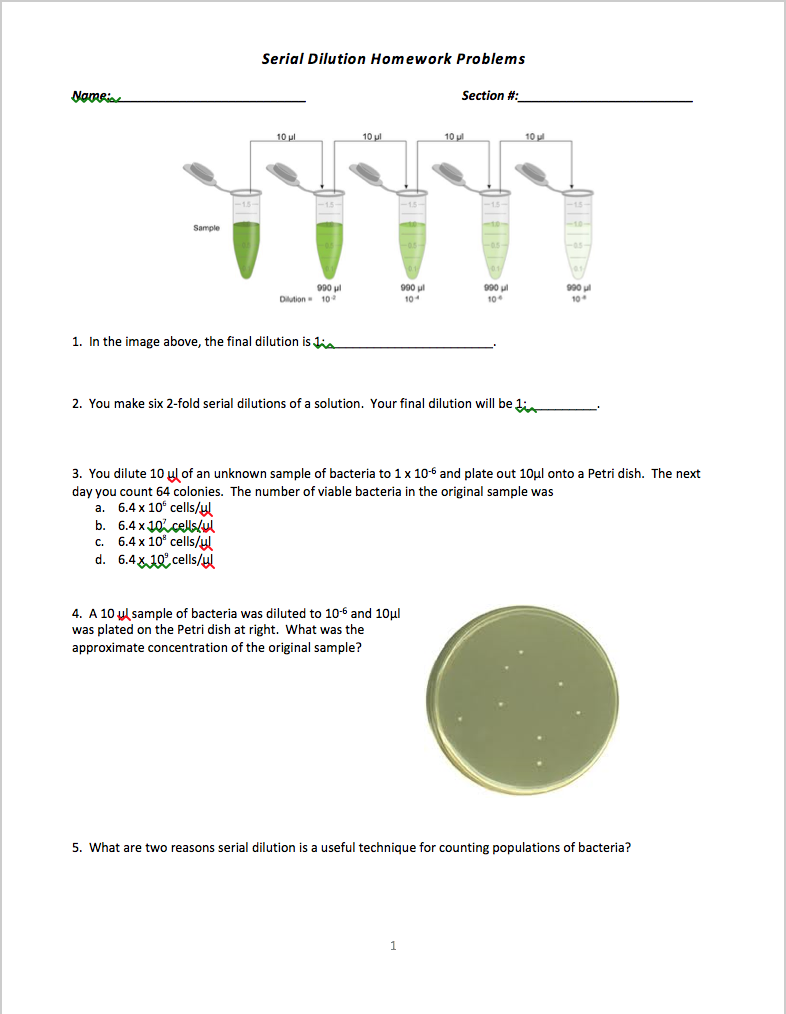
In biology and medicine In and, besides the more conventional uses described above, serial dilution may also be used to reduce the concentration of microscopic organisms or cells in a sample.Serial dilutions are widely used in experimental sciences, including, and. A tenfold dilution for each step is called a logarithmic dilution or log-dilution, a 3.16-fold (10 0.5-fold) dilution is called a half-logarithmic dilution or half-log dilution, and a 1.78-fold (10 0.25-fold) dilution is called a quarter-logarithmic dilution or quarter-log dilution. Serial dilutions are used to accurately create highly diluted solutions as well as solutions for resulting in with a. A ten-fold serial dilution could be 1, 0.1 M, 0.01 M, 0.001 M. Usually the at each step is constant, resulting in a of the in a fashion. Serial dilutions are.Ī serial dilution is the stepwise of a in. Serial two-fold and ten-fold dilutions are. A serial dilution is a step-wise and geometric series of. Diagram a three step 10‐1 serial dilution. Conclusion: The 2-dilution and 4-dilution neutralization tests yielded comparable results when estimating the population's GMT however, the difference between the two is not negligible when assessing the seroincidence.1:8 or an 8‐fold dilution. Estimates of seroincidence with at least 4-fold increase and seroconversion/4-fold increase were significantly higher using a 4-fold dilution neutralization test compared to the 2-fold dilution neutralization test with 8% (95%CI: 1%-12%) and 9% (95%CI: 1%-17%), respectively. While the dilution approaches did not affect estimates of GMT of the total population and the positive population, and seroincidence with seroconversion only, the differences were 2, 6 and 2%, respectively (P>0.05). However, the limits of agreement (LOA) (-1.12-1.21), with the 95% confidence interval of upper LOA (1.10-1.31) and of lower LOA (-1.22-1.02), significantly exceeded the Clinic accept interval (-1, 1) indicating insufficient agreement between the two approaches in practice. Results: The mean difference (0.04, 95%CI:-0.02-0.10) between the two dilution approaches was not significant. Stratified analysis was conducted to estimate effect dilution approach on GMT, seroprevalence and seroincidence.

Agreement was estimated using the Bland-Altman method. Methods: Based on a prospective cohort of 1-9 years old children, mothers and infants established in Anhua County, Hunan Province, during 2013-2018, from which 92 participants with a total of 386 blood specimens were sampled and tested with a 2-fold serial dilution and a 4-fold serial dilution neutralization tests against EV-A71 at the same time. Objective: To evaluate consistency between 2-fold serial and 4-fold serial diluted neutralization tests against Enterovirus A71 (EV-A71) in estimating titer, Geometric mean titer (GMT), seroprevalence, and seroincidence.


 0 kommentar(er)
0 kommentar(er)
